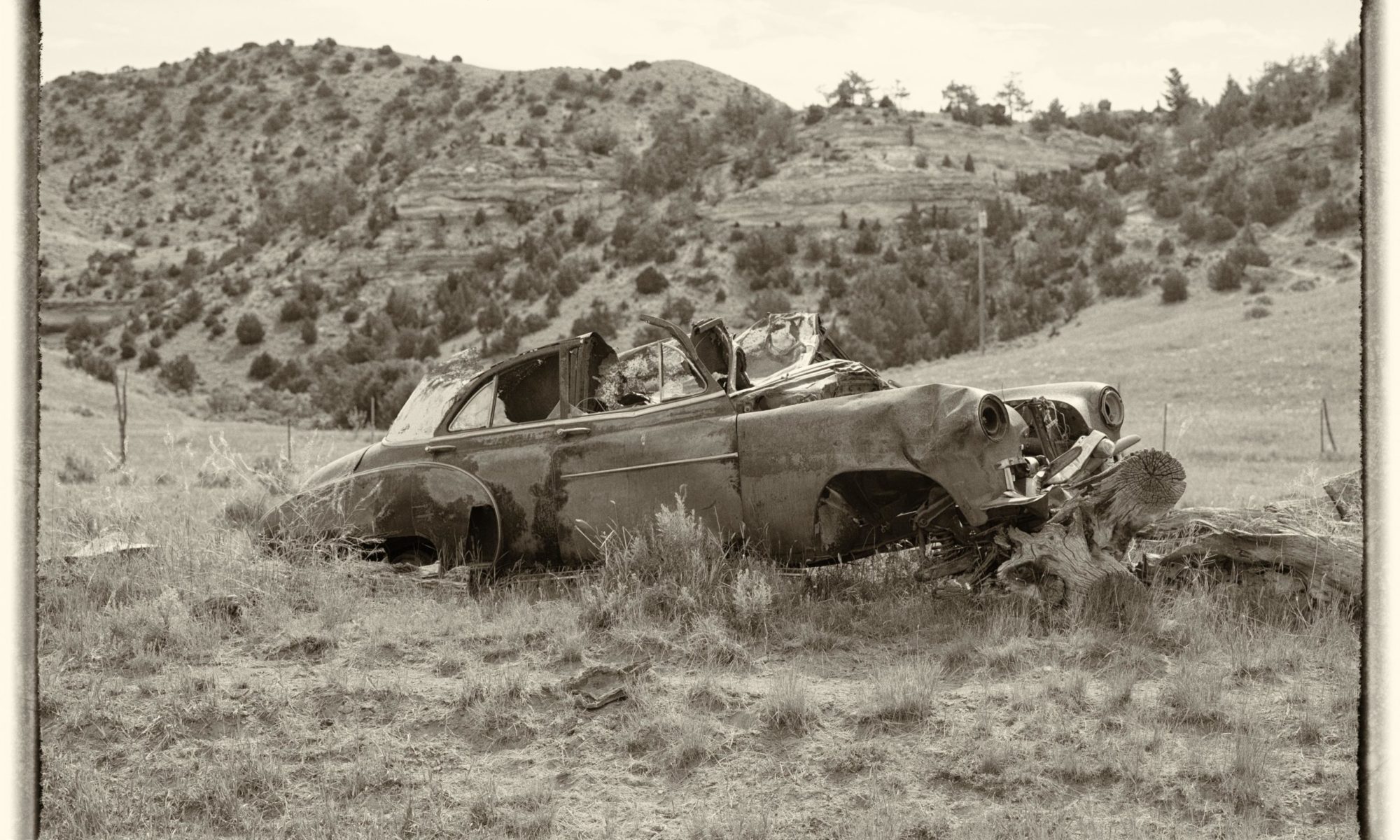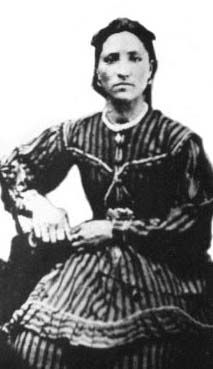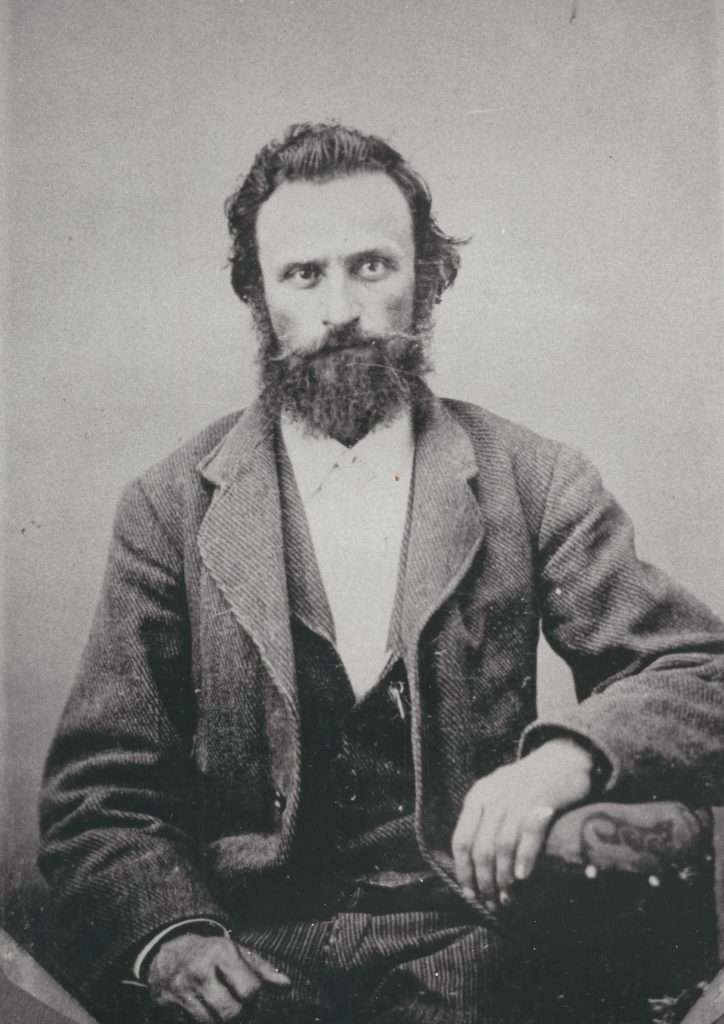Please allow me the liberty to imagine how Guadalupe may have felt as she took one last look at her home on Sapillo Creek. I have only met her through the treasure chest of stories passed on to us by our ancestors as well as the values and examples lived by her children.
Apache Hill, as they called it, rose from the valley floor where the Brannin Ranch stood. The wagons were loaded and as they made their way up the hill, Guadalupe looked back at the ranch below. She shuddered a bit. With a clear vision and the taste of fear, she could almost see the Apache scouts riding down the hill into their yard. Though that had happened years before, it was a day that lived in her memory and evoked a longing for the place of refuge she sought. She could still see little son Dick run out of the house, blonde head bobbling on the wiggling little boy. The other children had dark skin, thick black hair, and black eyes to match, but Dick had the coloring of Guadalupe’s father, called “Goldie.” That day, the braves she had provided with food stopped eating at the sight of the little gringo. “He Texicano!” They would lift his scalp!
Guadalupe’s Spanish blood and a mother’s fierce protection immediately went into action. In spite of her fear, she reacted instinctively, “He is mine. He is like my father!” That was not a lie. By the looks of Guadalupe, she could pass for an Indian. When they questioned her parentage, she claimed to be the daughter of Old Chief Victorio, a revered Apache chief. That was enough for the braves! There were stories that Victorio wasn’t an Apache but had been a little Mexican boy taken by the Indians and raised as an Apache. The Indians, known to detect a lie, believed her story. The scouts said no one would bother their place or their family again. At that, they mounted their horses, rode off and true to their word, the Apaches never bothered them again though they passed often and sometimes camped nearby.
As the horses disappeared in the distance, Guadalupe’s knees went limp. It may have been out of fear, but there is a chance it was because she told a lie.
That incident was not the first encounter they had with Indians, nor the last. On one occasion, Guadalupe ran to escape being seen by an Indian brave. She and little Ed, age two, went in search of her saddle pony. She walked up the bank and not more than thirty feet away, an Indian chewing a cornstalk sat on a rock, finger extended in front of him, counting freight wagons across the mesa. Turning quietly, she grabbed the little boy, put her hand over his usually talkative mouth, whispered, “Indians,” and fled back to the settlement where they were staying while the menfolk were gone. When she reported to one of the men left to guard the families, he said she had to be mistaken. Surely an Indian would not be so close to the settlement. He went to investigate only to find the remains of a cornstalk, horse tracks, Guadalupe’s footprints, moccasin prints near the rock where the Indian sat, and the imprint of the butt of his gun.
The Brannin family won the respect of the Apaches. The Indians camped on their property from time to time and occasionally even stayed a few days. Once when they were camped, they decided to cut their hair. Some of the braves went to the Brannin cabin and asked to borrow scissors. They brought the scissors back and before long another came along and asked to borrow them. It seemed as if all of them had made it to their door, but they always returned the shears. Surely just the thought of that brought lighthearted amusement as Guadalupe thought back to that time.
Not only did Guadalupe earn their favor, they also had great regard for the patriarch of the family. He was known to be fair and generous with them. One morning, he heard the Apaches were coming through. It is said that Victorio, the chief, and his son Nana were among the number as they were being escorted through the country by an Indian agent. Stanton rode out to check the herd of cattle when he heard a shot. He spurred his horse and galloped in the direction of the sound. One of his three-year-old steers lay on the ground kicking. He put the steer out of its misery as ten Apaches popped out of the brush. A young brave admitted to the deed saying he didn’t know there were any ranches nearby and thought he would get some fresh meat. The agent was furious, but Stanton told them they could have it. He had meat hanging at his house and couldn’t use anymore. That one act of kindness went a long way and earned him the title of being a big-hearted man. In a country where many families suffered loss of possessions or life, the Brannin family was spared. They didn’t treat the Indians as savages, but as people without a home.
As the wagon wheels left tracks behind in New Mexico Territory, Guadalupe’s hope of a place of refuge drew closer. Maybe as she took a final look, her mind was flooded with thoughts of the place they called home for many years. She didn’t leave everything behind for she carried those memories with her, moments that had quickly turned into heroic memories. Though she faced other hardships and loss, she did not face them alone.
The story of Guadalupe’s only lie as recorded in family history along with a plethora of other memories continues to echo through the years as it travels from generation to generation. Now, we are responsible to share the family legacy.



And, Sheri, you pass on the family history just plain beautifully !! Thank you SO much ! I enjoy EVERY ONE !!